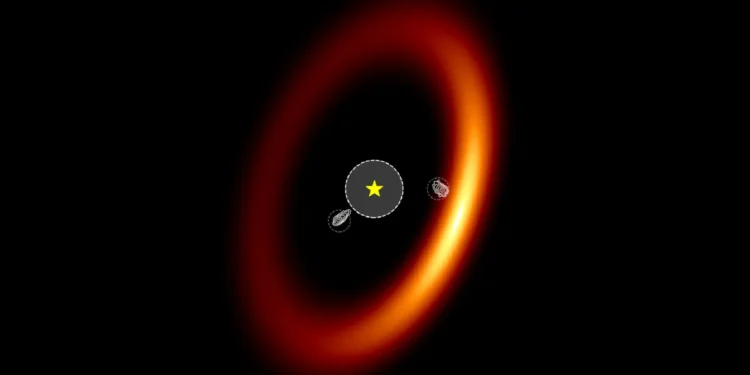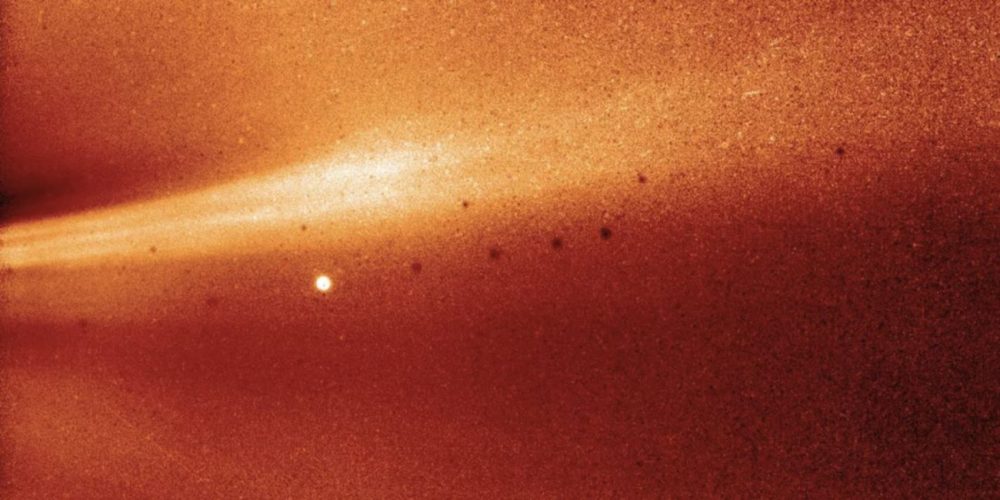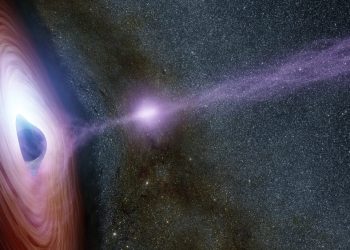The James Webb Space Telescope (JWST) has once again pushed the boundaries of astronomy, offering an unprecedented view of planets forming around a distant star. Targeting PDS 70, a young star located 370 light-years away, Webb’s latest observations provide new insights into the formation of planets—offering astronomers a front-row seat to a cosmic event that mirrors the early days of our own solar system.
Planets emerge from swirling disks of gas and dust encircling young stars, but direct observations of this process remain rare. PDS 70 is one of the few systems where astronomers have successfully imaged protoplanets—worlds still in the process of gathering mass. The system contains two known planets, PDS 70b and PDS 70c, both of which were first observed using the Very Large Telescope (VLT) in Chile. These planets have been key to understanding how young planets interact with the material around them.
Now, JWST has turned its powerful infrared eyes to the system, uncovering fresh evidence that these planets are still accumulating material from their surroundings. Even more intriguing, the data suggests that a third planet may be forming, adding a new layer of mystery to this celestial laboratory.
Cutting-Edge Technology Reveals Hidden Details
Using its Near Infrared Imager and Slitless Spectrograph (NIRISS), JWST employed a specialized technique called Aperture Masking Interferometry (AMI). This method enhances resolution by combining multiple light sources, allowing astronomers to detect faint structures that would otherwise be lost in the glare of the central star.
As explained by Universe Today, by observing PDS 70b and PDS 70c at longer wavelengths than ever before, JWST detected excess infrared light—an indication of warm material surrounding the planets. This suggests that both are still embedded in circumplanetary disks, swirling reservoirs of gas and dust that could one day form moons.
“These observations give us an incredible opportunity to witness planet formation as it happens,” said Doug Johnstone from the Herzberg Astronomy and Astrophysics Research Centre. “Seeing planets in the act of accreting material helps us answer long-standing questions about how planetary systems form and evolve. It’s like watching a solar system being built before our very eyes.”
A Third Planet in the Making?
Speculation about a third planet in the PDS 70 system has been growing. Previous observations hinted at an unexplained source of light near the star, though it was unclear whether this was a planet, a dust cloud, or an inner spiral of material. JWST’s latest findings have narrowed down some of the possibilities, but confirmation remains elusive.
If the object—tentatively labeled PDS 70d—turns out to be a planet, it may have a strikingly different atmospheric composition compared to its siblings. This raises new questions about the diversity of planetary formation even within a single system.
Follow-up observations will be crucial in determining whether PDS 70d is indeed a planet or just an unusual feature within the star’s disk. If confirmed, it could provide further clues about how planets grow and evolve in their earliest stages.
PDS 70’s star is only 5.4 million years old—an infant in cosmic terms. It has yet to reach the Main Sequence, the stable phase of a star’s life where it burns hydrogen efficiently. During this early stage, the interaction between the star and its planetary disk plays a crucial role in shaping the architecture of the emerging solar system.
By studying young planetary systems like PDS 70, astronomers hope to refine models of planet formation and better understand the origins of worlds, including our own.
JWST’s observations continue to reshape our understanding of the cosmos, proving that even in the vastness of space, we can witness the birth of new worlds with astonishing clarity.











